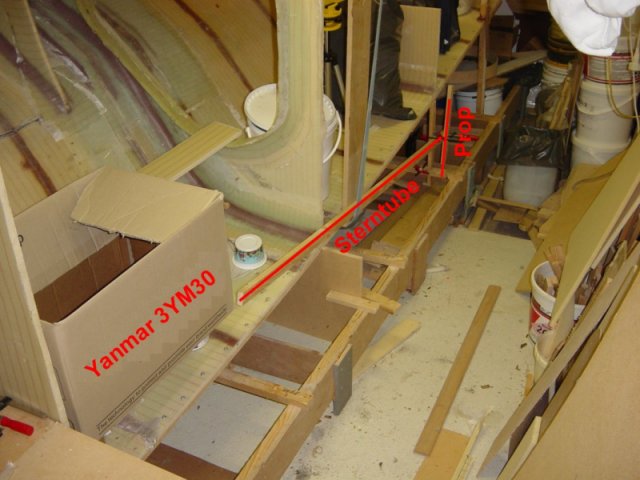
|
Hey there, this site has been updated, |
|
|
|
|
||||||||||
|
|
|
|||||||||
|
|
||||||||||
Engine and propulsion systems. |
||||||||||
|
|
An outboard engine, though widely used for multihulls, is not suitable for me. Main disadvantages are the weight at the end, bad behavior in waves (this is an ocean going vessel) and the fuel (petrol is highly flammable and also poorly available in the maritime environment) . So, it becomes an inboard diesel with a prop shaft. A saildrive would be easier to install but would ruin the drying out capability of the trimaran and thus is not an option. While writing this (renewed) engine page it's more than 5 years after I started this building project. At that moment the Smart CDI engine was a new marine engine on the market and looked quite promising. Since then I've learned a lot and it became obvious that this engine won't make it till purchase stage. As the old engine page hits a lot of Google searchers and direct links, I've moved the page here. While working on the starboard interior, that was also the perfect stage to figure out the stern tube assembly. In this picture I made a "mock-up" of the
engine and stern tube to get myself an idea of the engine installation.
Next question is what kind of propeller shaft support bracket to
choose. The plans calls for the fin or P type but in my view these have some
disadvantages. First, it is not made of composite but of stainless steel, bronze
or brass . This means a different material that sticks out of the hull with risk
of leakage as it is a subject for high forces. To me it also looks quite
vulnerable but it has to withstand ropes or netting that can be caught by the
propeller but also a stone/rock on the wrong place when drying out.
In this picture I made a "mock-up" of the
engine and stern tube to get myself an idea of the engine installation.
Next question is what kind of propeller shaft support bracket to
choose. The plans calls for the fin or P type but in my view these have some
disadvantages. First, it is not made of composite but of stainless steel, bronze
or brass . This means a different material that sticks out of the hull with risk
of leakage as it is a subject for high forces. To me it also looks quite
vulnerable but it has to withstand ropes or netting that can be caught by the
propeller but also a stone/rock on the wrong place when drying out.
I found these photo's of a not so happy P-bracket boat owner (caught by a lobster pot rope).
to be continued ......
| |||||||||